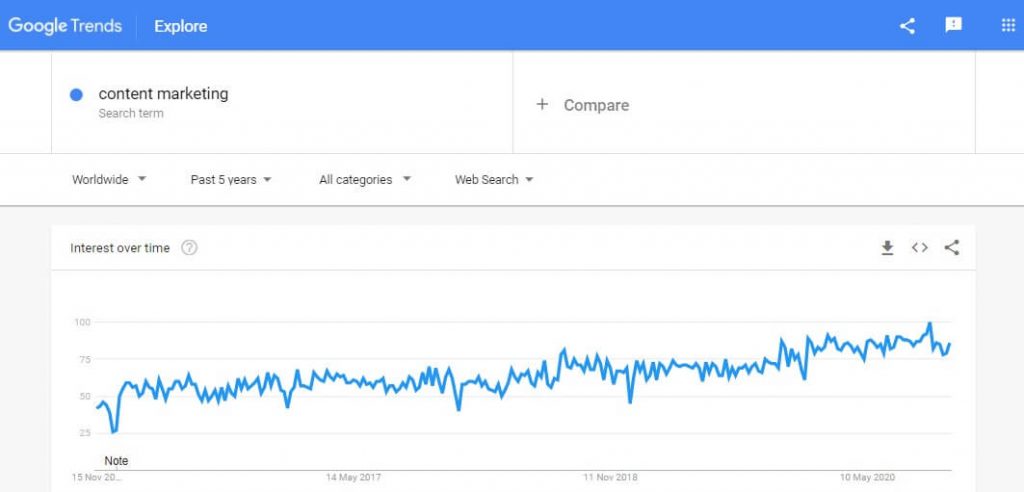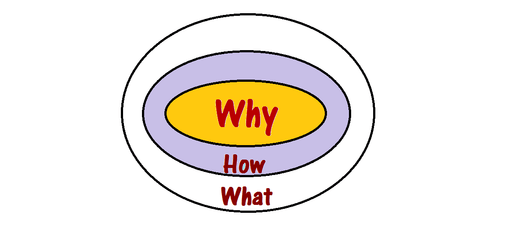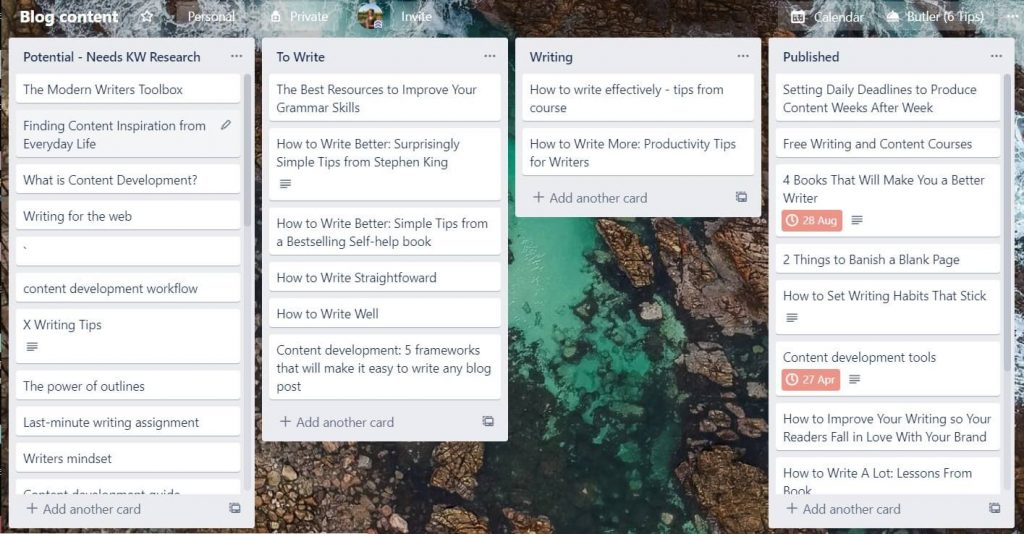It was 2009 and Marcus Sheridan knew he was about to lose it all.
All around him, the financial crisis was wrecking the economy.
Sheridan’s pool and spa business was not immune.
In 48 short hours, Sheridan’s River Pools lost $250 000.
The worse was still to come, and Sheridan needed to do something drastic to rescue a desperate situation.
That’s when he decided to start blogging.
In the end that investment in content development turned his company around and changed his life forever.
Sheridan’s success story shows us the power of content development and content marketing.
Over the past decade, I’ve created content for newspapers, governments, tech startups.
During this time, I collected the best guides, tools, and posts on creating content people love.
In this post, I share a few of the helpful resources I found, plus the content lessons I’ve learned over the past decade.
Hopefully, this can help you navigate content development.
Content Development Opens Doors
Before we jump into the details, let’s talk a little bit more about Sheridan’s story.
What’s striking is that he knew nothing about using content for business when he started blogging.
Here’s Sheridan speaking in an episode of HubSpot’s Skill Up podcast:
“By January of 2009, we’re literally looking over the edge of bankruptcy, and I think I’m gonna lose everything. And that’s when…I start to read all these fancy phrases like inbound marketing, content marketing, social media.
“What I heard was…if I just obsess over the questions my customers ask every single day, good, bad, or ugly, and I’m willing to address them on the website through texts and video, I might save my business.”
So, that’s exactly what he did.
“We embraced this simple philosophy at the time we called it, they ask you answer.
“And we said, we’re going to be the best teachers in the world when it comes to, in our case, fiberglass pools…we did just that and we became the most traffic swimming pool website in the world.”
Two things jump out me here:
- The decision to create helpful content
- The commitment to staying consistent
These two things are key for creating content that gets you closer to your professional goals.
This is the kind of content that opens doors, and I believe it because it’s happened to me.
A few years ago, I was a struggling freelance writer. By creating content regularly, people started reaching out to me with freelance assignments and guest blog opportunities.
Long story short, content works.
What is Content Development in Marketing?
Now, if you feel like content development is everywhere you look, you might be right.
The latest data from Google Trends charts how interest in content marketing has grown over the past decade.

But, what is content development?
Here’s the official Wikipedia definition for content development:
“Content development is the process of originating (creating), editing, manipulating and maintaining the contents in order to provide knowledgeable fillings to the users.”
Put another way, content development involves creating and publishing content to inform or educate the intended audience.
The way I see content development is that it has two goals. You’re creating content for a reason and your audience wants to consume that content for a reason.
But, how do you make sure your content gets to your audience?
Here’s where content marketing fits in.
The Content Marketing Institute describes content marketing like this:
“Content marketing is a strategic marketing approach focused on creating and distributing valuable, relevant, and consistent content to attract and retain a clearly defined audience — and, ultimately, to drive profitable customer action.”
So, we’re talking about creating content that can move readers to action.
That’s the secret to creating effective content.
Of course, that action depends on your goals. You might want more clients for your freelance business or customers for your company.
Compelling content can help get the results you’re after.
Now, let’s get into the content development steps.
1. Define a Content Development Process
Developing a content development process is the best way to consistently create content.
Most times, the only reason people create more content than you is because they have a process.
These days, I never run out of ideas. I write a blog post every week, and I post to LinkedIn regularly.
My secret superpower?
I have a process to make sure I always have content:
- Read every day
- Collect ideas as they come
- Write a blog post every week
- Write for up 45 minutes every day
The trick is to find a content development process that makes sense for you.
Tons of things will influence what your ideal content development process might look like. Do you have a team? Or, are you running solo? Are you creating content for yourself, your client, or your company?
In this blog post, Nathan Ellering, suggests three ways to organise your content development process:
- Plan a list of every piece of content you’ll develop.
- Add that list to a marketing calendar with clear deadlines
- Keep your content development and approval workflow simple
I wrote about my content development process here.
Now let’s look at the steps in the content development process.
2. Start With the Why
Simon Sinek’s Start With the Why video clip is one of these pieces of content that seems to follow you around on almost every other social network.
There’s a reason for that.
It’s because it’s a brilliant piece of advice, and it applies to content development, too.
In HubSpot’s Content Strategy Course, they get into Sinek’s Golden Circle concept and what it means for content development.

“According to Sinek, most people communicate by starting with the “what” they do aspect and eventually work their way back to talk about “how” and “why” they do what they do.”
But successful companies start with the why.
- Why: why are you doing what you’re doing?
- How: how will this help your audience?
- What: what is product or service?
Here’s three content strategy questions from the Content Marketing Institute that will help you get started:
- Who should the content we produce be most relevant to?
- What benefits does this audience receive from consuming our content?
- What desirable and distinctive content experience can we consistently deliver?
3. Know Your Audience
The best place to start is to consider your audience.
This matters if you’re trying to create content to promote your business or build your personal brand.
Think of yourself as a publisher, not just a brand or single person creating content.
A publisher mindset puts the audience first, writes Deloitte in the Wall Street Journal.
“In contrast to the campaign model of the past, the publishing model of today involves producing content that’s not about the company or the brand but about customers and their needs.
As a community newspaper journalist, my job was to fill the weekly paper with stories readers cared about. I could only do this if I knew the community.
So, I’d spend most of my time attending local council meetings, visiting schools, and just getting a sense of the issues in that area.
This helped me understand my reader’s biggest concerns and dreams.
You can do the same.
Speak to your audience to understand them.
Here are a few ways you can better understand your audience:
- Find them on LinkedIn
- Check questions on Quora
- Look at Google’s Search People Also Ask tab
4. Content Goals
The next step is deciding on the goal of your content.
In this podcast episode, Seth Godin encourages us to ask:
- Who’s it for?
- What’s it for?
Brilliant content has a clear purpose, suggests Neil Patel in this content strategy development guide.
“Great content is created for a specific purpose, and this purpose needs to be defined. Ask yourself if you are creating content to boost brand awareness, generate leads, convert users, attract past customers, improve search ranking results, or something else altogether.”
During this process, consider the type of content that will help you achieve this goal.
For example, if you want to improve your rankings, you will likely create a long-form blog post that’s the best resource on a particular topic.
What are the types of content?
Here’s Lyfe Marketing list of some of the most popular content types:
- Blogs
- Lists
- eBooks
- Infographics
- Video
- How-to Guides
- Case Studies
- Checklists
- Interviews
You can then drop everything into a content calendar.
I’ve used Google Sheets as a content calendar. But, you can try using Trello, too.
Here’s an example of how I use Trello for content development.

5. Content Creation
Once, you have everything you need, you’re ready to start creating content.
This step by step by HubSpot offers guidelines for content creation steps.
SEO research
Will you reader be able to find your article online?
You can use Google’s related searches section or People Also Ask tabs.
Tools: Ahrefs, UberSuggest, and Google’s keyword planner.
Ideation
We’re surrounded by inspiration.
You can mine customer conversations, review sites, and competitor sites for ideas. Think of books or research papers, too.
HubSpot suggests coming up with topic clusters. This is a group of topics you want to be known for and then brainstorming around those clusters.
Tools: Google Scholar, BuzzSumo, SparkToro
Creation
During the creation stage, collect everything you need.
This includes:
- Interviews
- Research
- Background
Here’s more on the writing process and content development.
My creation process is getting everything I need and dropping it all into a Google Doc.
Tools: Google Docs, Workflowy (outlines)
Editing
I spend most of my time on editing. This is where you can refine your ideas.
My editing process includes a stage I call refining. It’s chipping away at the first draft to create something meaningful out of the mess.
Find an editing and revising process that works for you.
Tools: Hemingway Editor
Formatting
Formatting depends on your medium. For example, if you’re publishing a blog, you will need to make sure your article includes lists to help with readability.
6. Content Distribution
I used to think that if just created content, people would find it. But that can take some time. For each piece of content you create, add a promotion plan.
You need to think about you’re going to get your content out into the world.
In this guide, Outbrain lists content distribution categories:
- Owned content distribution: sharing to your own blogs, email list, or social media channels
- Earned content distribution: this channel includes guest articles, retweets, shares, and press coverage
- Paid content distribution: there are different ways to pay for content distribution, and that includes the cost-per-click model
I’ve had the most success when I focused on a specific distribution channel. That’s because it’s hard to master tons of new platforms if you’re not part of a large team. By getting stuck into on or two channels, you become part of a community and better understand how the channel works.
Once you start developing your content process and plan, you will create consistently and with ease.
Check out this post for a list of content development tools.
